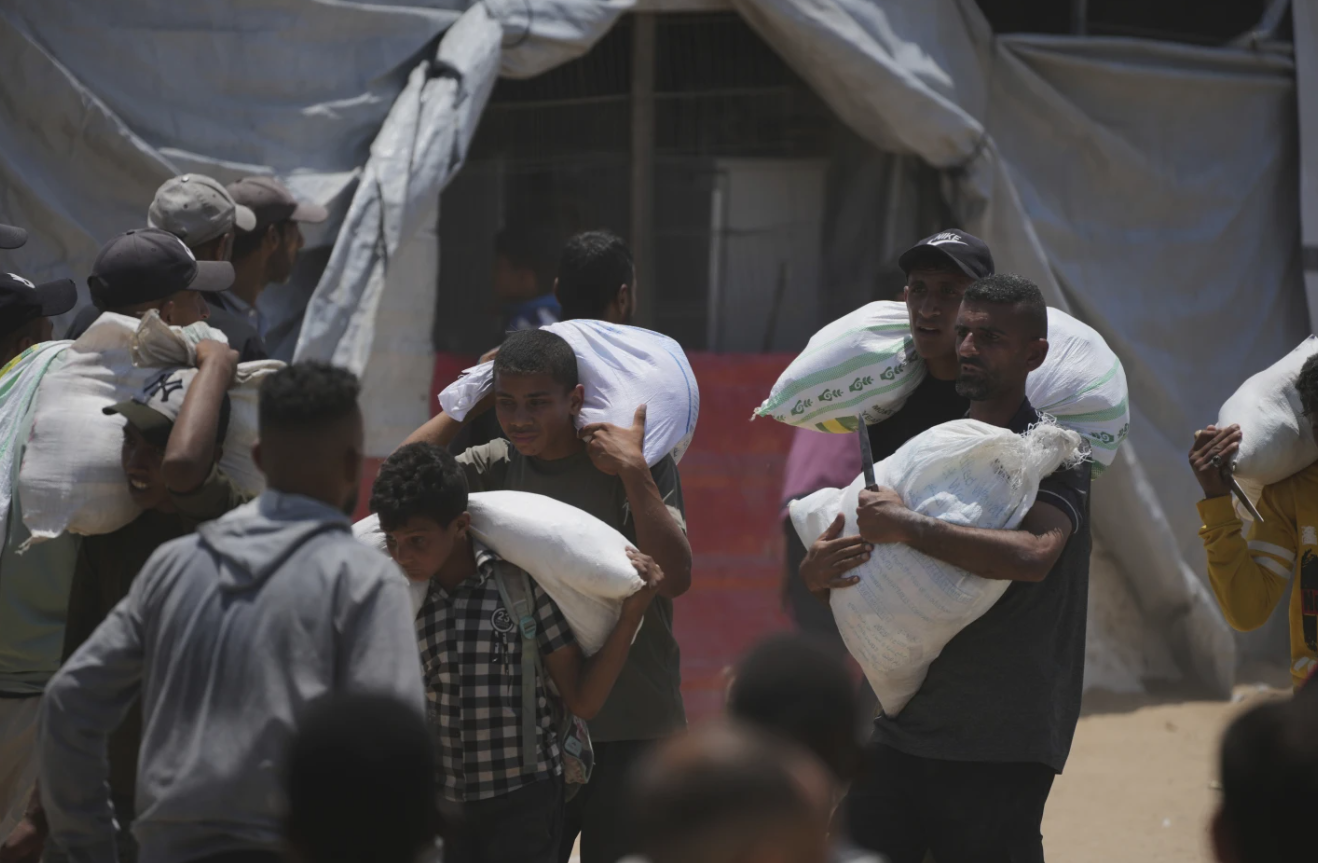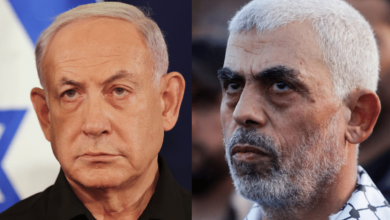Israeli Fire Kills Civilians Near Aid Distribution Sites in Gaza as Humanitarian Crisis Deepens
Israeli gunfire killed at least 12 Palestinians and injured dozens Sunday as they gathered for food aid in Gaza, officials and witnesses said, deepening fears over civilian safety near aid sites.

AL MAWASI, Gaza Strip (WE) — Israeli troops opened fire Sunday on Palestinians approaching two aid distribution sites in Gaza, killing at least 12 people and wounding dozens, according to Palestinian health officials and eyewitnesses. The victims had gathered near hubs operated by the Gaza Humanitarian Foundation (GHF), a group backed by the United States and Israel.
The Israel Defense Forces (IDF) claimed it fired only warning shots at people who entered a restricted combat zone. Witnesses, however, reported that soldiers aimed directly at unarmed civilians.
Gunfire near these new aid centers has become frequent. Over the past two weeks, shootings have killed more than 80 Palestinians near the sites, according to hospitals in Gaza. Thousands gather daily at these distribution points, hoping to get food after nearly 20 months of war and displacement.
Gaza’s Health Ministry said it received 108 bodies within 24 hours. Eleven of them came from Khan Younis, where Israeli tanks reportedly fired near a roundabout close to a GHF site in Rafah.
Palestinian witnesses at the scene described chaos. Some claimed soldiers targeted civilians even after people raised their hands to show they were unarmed.
“I was walking to the aid site when the tank fired,” said Adham Dahman, who spoke while being treated at Nasser Hospital. “We didn’t know where to run. It was a trap.”
Zahed Ben Hassan said someone beside him got shot in the head. “They announced the area would be safe from 6 a.m. to 6 p.m.,” he said. “Why did they shoot when they could clearly see us in daylight?”
The IDF stated it warned people to turn back and considered the area dangerous during nighttime. The military said it fired at “suspects” who ignored those warnings.
Another 30 casualties arrived at Al-Awda Hospital in central Gaza. Doctors said the wounded had approached another GHF distribution hub when gunfire erupted early Sunday morning.
Despite the violence, a GHF official said all three distribution centers operated as planned. The organization had temporarily paused operations last week to discuss safety with the Israeli military. The GHF urged civilians to stay on designated paths and avoid straying into unmarked zones.
The GHF runs its aid centers inside military-controlled zones. Independent journalists and monitors cannot access these areas. This lack of visibility has raised fears among aid workers and civilians alike.
One GHF site began testing direct food deliveries to communities north of Rafah. But locals still fear approaching these drop zones.
Israel created the GHF system to replace the United Nations and other international organizations, which it accused of allowing Hamas to siphon off aid. The U.S. supports this shift. However, the U.N. has denied that Hamas engages in widespread theft of humanitarian goods.
The World Food Programme (WFP) and UNRWA say the new system fails to meet Gaza’s growing needs. They warn that civilians must travel to aid hubs in areas Israel controls. This approach forces people to move, making them vulnerable to airstrikes and gunfire.
Humanitarian workers say the old U.N.-led system remains stalled. Israeli restrictions, breakdowns in law and order, and widespread looting prevent smooth deliveries.
Gaza’s food production has collapsed. Most of the region’s 2 million residents now rely entirely on outside aid. In March, the U.N. warned that famine could soon grip parts of Gaza unless Israel lifted its blockade and halted its offensive.
Instead, Israel renewed its military campaign.
The Israeli government has said its war aims remain unchanged. Officials plan to keep fighting until all hostages are freed and Hamas is eliminated. On Sunday, the Israeli army invited journalists into Khan Younis. There, officers showed a tunnel running under the European Hospital. They claimed to find the body of Mohammed Sinwar, leader of Hamas’ armed wing.
Brig. Gen. Effie Defrin, an army spokesperson, said troops discovered the body in a room beneath the hospital’s emergency department. “We prefer not to strike hospitals,” he told reporters. However, residents say the European Hospital has endured repeated shelling in recent weeks.
Hamas responded by reiterating its demands: release of Palestinian prisoners, a permanent ceasefire, and Israel’s withdrawal from Gaza. The group still holds 55 hostages, although fewer than half are believed to be alive.
Mediation efforts by Egypt, Qatar, and the U.S. have failed to make progress. Talks have stalled for months.
Read More:
- UK to Review China’s Embassy Plan After Trump Warning and Espionage Fears
- Colombian Presidential Candidate Miguel Uribe Turbay Shot During Campaign Rally in Bogotá
- Russia Launches Massive Drone and Missile Strikes on Ukraine After Kyiv’s Deep Drone Attacks Inside Russia
The war started on October 7, 2023. On that day, Hamas fighters crossed into southern Israel, killed around 1,200 people—mostly civilians—and took 251 hostages.
Israel responded with a massive air and ground campaign across the Gaza Strip. The war has since devastated the territory.
According to Gaza’s Health Ministry, more than 54,800 Palestinians have died in Israeli strikes. The ministry says most were women and children. It does not distinguish between civilians and fighters. Israel, for its part, claims to have killed over 20,000 Hamas militants, though it has not shown public evidence to support the figure.
Today, about 90% of Gaza’s population is displaced. Many live in tents or crowded schools turned into shelters. Clean water is scarce. Hospitals barely function. Aid convoys are often blocked or looted. Hunger is spreading rapidly.
Groups such as Doctors Without Borders and the International Committee of the Red Cross warn that the healthcare system is on the brink of total collapse. Entire neighborhoods lie in ruins, and access to basic necessities has nearly vanished.
Civilians who head to aid sites often take enormous risks. They walk through combat zones, past rubble, and across Israeli checkpoints. The promise of food often turns deadly.
Without international oversight, many fear that aid is becoming a tool of war. Critics say Israel now controls when, where, and to whom food is distributed. This situation forces desperate people to follow military orders just to eat.
Meanwhile, reports of children killed in line for bread continue to surface. Eyewitnesses describe horrifying scenes—mothers cradling dead infants, fathers digging graves with their bare hands.
The United Nations Security Council has called for immediate action. But so far, no resolution has passed that enforces a ceasefire. Many diplomats cite U.S. vetoes and divisions among world powers as major barriers.
Aid workers urge governments to pressure Israel to protect civilians. They also call for unfettered access to Gaza for humanitarian groups and journalists.
Without drastic changes, experts warn the crisis will worsen. The war may enter a new phase, where hunger and disease kill more people than bombs.
As Sunday’s bloodshed shows, people seeking food in Gaza risk dying before they ever reach the line.















